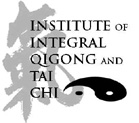Complementary and Alternative Medicine (CAM) Research Position of the Institute of Integral Qigong and Tai Chi
According to the National Center for Complementary and Alternative Medicine (NCCAM), Qigong and Tai Chi are two of the CAM therapies included in the 2002 study by the National Health Interview Survey (NHIS). This survey, released in May 2004 by the NCCAM and the National Center for Health Statistics (NCHS, part of the Centers for Disease Control and Prevention), contributed the most comprehensive and reliable findings to date on Americans' use of CAM.
The 2002 edition of the NCHS's annual study interviewed 31,044 Americans, aged 18 or older from U.S. civilian noninstitutionalized population, about their health- and illness-related experiences. The 2002 edition included detailed questions on CAM.
The CAM practices surveyed are:
- Biologically based practices, e.g herbs, special diets, vitamins.
- Energy medicine e.g. acupuncture, homeopathy, Qigong, etc.
- Manipulative and body-based practices e.g. massage therapy, chiropractic, rolfing, shiatsu, etc.
- Mind-body practices e.g, Qigong, Tai Chi, prayer, meditation, guided imagery, hypnosis, etc.
- Whole medical systems built upon complete systems of theory and practice, e.g. Traditional Chinese Medicine, Ayurvedic medicine, naturopathy, homeopathy. Tai Chi and Qigong are considered components of Traditional Chinese Medicine.
What does this mean to you? The 2002 survey asked people to select from five reasons to describe why they used CAM. Reasons were as follows, and people could select more than one:
- 55% believed CAM would improve health when used in combination with conventional medical treatments.
- 50% thought CAM would be interesting to try.
- 28% thought conventional treatment did not help.
- 26% a conventional medical professional suggested trying CAM.
- 13% felt conventional medical treatments are too expensive.
CAM was most often used to treat or prevent musculoskeletal conditions or other conditions with chronic or recurring pain.
Qigong and Tai Chi Emerge As Mind-Body Medicine, Component of Whole Medical Systems, and Energy Medicine
For thousands of years, people have benefited from Qi cultivation practices and believed that improving the function of Qi maintains health and heals disease. Now in the twenty-first century, we are seeking to substantiate Qigong and Tai Chi's claims of improving the health through more robust clinical research.
Part of the difficulty with researching the health restoration modalities of Qigong and Tai Chi is that they may be used in combination with other treatments such as acupuncture, or herbs. Research has been largely anecdotal and not randomized controlled trials. The majority of the reports published are abstracts in Chinese. Yet 3500 records to date have been collected by Dr. Ken Sancier of the Qigong Institute in his Qigong database postulating the benefits of Qigong on conditions ranging from hypertension to arthritis.
According to NCCAM guidelines, we know that Qigong and Tai Chi are considered:
- Components of Traditional Chinese Medicine
- Mind-body interventions
- Putative type energy medicine
The Institute of Integral Qigong and Tai Chi (IIQTC) will be focusing on studying the underlying principles of why these practices work, in order to help people manage pain and functional impairment, prevent disease and empower individuals to take responsibility for their own health, and promote wellness and healthy longevity.
Whether you are a corporation seeking to lower health care costs for your employees, a social service agency wanting to demonstrate the effectiveness of its programs to grant makers, or a institute or university performing clinical research, a key part of your success will be in designing and measuring the outcomes of your efforts. Indeed sometimes assessment of a population before a program will determine the need for that program.
IIQTC, National Council on Aging and University of Illinois Research Collaboration
IIQTC Current Research Project
